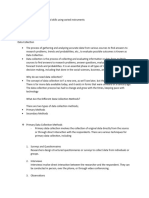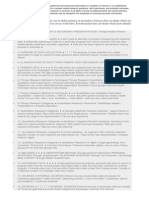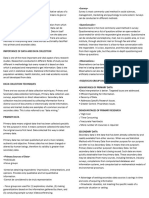0% found this document useful (0 votes)
27 views6 pages5 +Data+Source
The presentation discusses various data collection sources in research, including primary, secondary, and tertiary data, highlighting their advantages and challenges. Primary data is directly relevant but time-consuming, secondary data is cost-effective but may lack quality control, and tertiary data offers broad coverage but depends on the reliability of secondary sources. Understanding these aspects is crucial for informed decision-making in data collection.
Uploaded by
Soumya RoyCopyright
© © All Rights Reserved
We take content rights seriously. If you suspect this is your content, claim it here.
Available Formats
Download as PDF, TXT or read online on Scribd
0% found this document useful (0 votes)
27 views6 pages5 +Data+Source
The presentation discusses various data collection sources in research, including primary, secondary, and tertiary data, highlighting their advantages and challenges. Primary data is directly relevant but time-consuming, secondary data is cost-effective but may lack quality control, and tertiary data offers broad coverage but depends on the reliability of secondary sources. Understanding these aspects is crucial for informed decision-making in data collection.
Uploaded by
Soumya RoyCopyright
© © All Rights Reserved
We take content rights seriously. If you suspect this is your content, claim it here.
Available Formats
Download as PDF, TXT or read online on Scribd
/ 6

























































